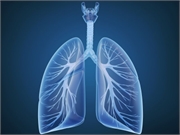Typical chest CT findings were bilateral parenchymal ground-glass and consolidative pulmonary opacities
FRIDAY, Feb. 7, 2020 (HealthDay News) — Key computed tomography (CT) findings have been characterized for patients infected with the 2019 novel coronavirus (2019-nCoV), according to research published online Feb. 4 in Radiology.
Michael Chung, M.D., from the Icahn School of Medicine at Mount Sinai in New York City, and colleagues reviewed a case series of chest CT scans from 21 symptomatic patients from China infected with 2019-nCoV to identify and characterize the most common findings. The patients were admitted to three hospitals in three provinces of China; all were positive for 2019-nCoV via laboratory testing of respiratory secretions.
The researchers found that bilateral pulmonary parenchymal ground-glass and consolidative pulmonary opacities were typical CT findings, sometimes with a rounded morphology and a peripheral lung distribution. Lung cavitation, discrete pulmonary nodules, pleural effusions, and lymphadenopathy were not observed. In a subset of patients, follow-up imaging demonstrated mild or moderate disease progression as manifested by increasing extent and density of lung opacities. Three of the patients had normal chest CT examinations at presentation.
“In summary, this work represents an early investigation of chest CT findings in the 2019 Novel Coronavirus (2019-nCoV) with the intention of creating familiarity with common imaging manifestations of the disease,” the authors write. “The radiologist plays a crucial role in the rapid identification and early diagnosis of new cases, which can be of great benefit not only to the patient but to the larger public health surveillance and response systems.”
The author of the editorial disclosed financial ties to the biopharmaceutical industry.
Copyright © 2020 HealthDay. All rights reserved.








